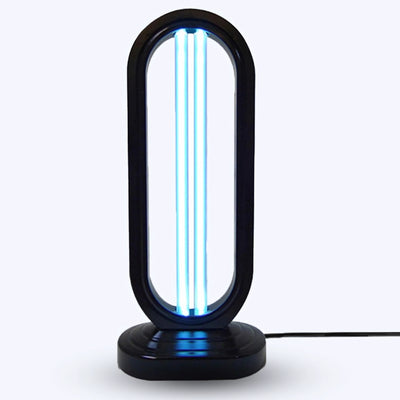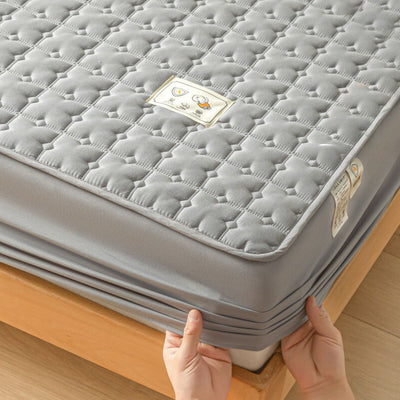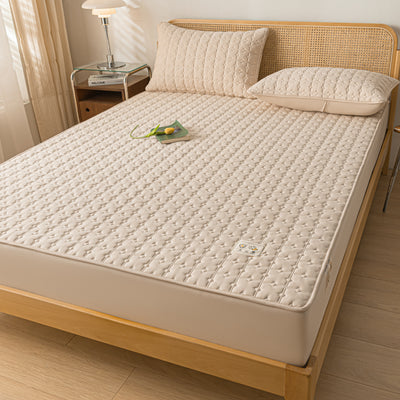Halloween might be a night of fun for humans, but for dogs, the constant activity, loud noises, and strange visitors can cause anxiety and stress. It’s important to understand what’s triggering your dog’s discomfort so you can take the right steps to help them stay calm and relaxed. Here are five common Halloween stressors for dogs and what you can do to make the night less overwhelming for them.
- Stressor: Constant Doorbell Ringing
Why it’s stressful:
For many dogs, the sound of the doorbell is a signal that someone unfamiliar is approaching their territory. On Halloween night, the frequent ringing can heighten their sense of alertness and anxiety, as they don’t understand why there are so many “intruders” in such a short time.

What to do:
To minimise the stress of the doorbell, you can either temporarily disable it or place a sign on the door asking trick-or-treaters to knock instead. This reduces the repetitive, sudden noise that can agitate your dog. Additionally, try to keep your dog in a room far from the front door where they won’t hear the doorbell as loudly. Use calming background noise like soft music or a white noise machine to help drown out any external sounds.
- Stressor: Unfamiliar Visitors in Costumes
Why it’s stressful:
Dogs rely heavily on scent and familiar visual cues to recognise people. Costumes, masks, and face paint can make strangers—even neighbours—look unrecognisable and intimidating to dogs. This can trigger defensive behaviours like barking, growling, or even attempts to hide.

What to do:
Create a safe space in your home where your dog can stay during trick-or-treating hours. This space should be away from the door and provide comfort, such as a favourite bed, blanket, and toys. You can also close the blinds to limit your dog’s exposure to strange sights outside. If possible, stay with your dog in this room to provide reassurance and reduce their sense of isolation.
Important reminder:
If you plan to dress your dog in a costume for Halloween, always prioritise their comfort above all else. While it’s tempting to choose outfits that look cute or adorable, the costume should allow your dog to move freely, breathe easily, and stay cool. If your dog shows signs of discomfort or stress while wearing the costume, it’s best to skip it altogether or opt for a simple festive collar or bandana.
- Stressor: Increased Noise and Activity
Why it’s stressful:
Halloween brings more foot traffic, laughter, and general commotion to the neighbourhood. Dogs may become anxious or overstimulated by the constant noise and movement around the house, especially if they are not used to this level of activity.

What to do:
To help your dog cope with the extra noise, try to keep their environment as calm as possible. Play soothing music or turn on the TV in the background to create a familiar and comforting ambience. Consider using calming aids like pheromone diffusers (such as Adaptil) or anxiety wraps, like a StormWrap™, which provides gentle pressure to help reduce anxiety. The wrap applies a comforting pressure similar to a hug, which can have a calming effect on dogs during stressful situations. For a simple yet effective solution, try the StormWrap™, available now here, to give your dog the comfort they need when it matters most.

- Stressor: Fear of Escaping or Being Trapped
Why it’s stressful:
With so many people coming to the door, there’s a higher risk that your dog may slip out unnoticed in a moment of anxiety or curiosity. On the other hand, some dogs may feel trapped if they’re confined to a small space without the ability to escape the noise.

What to do:
If your dog has a tendency to bolt, ensure they are kept securely indoors in a room away from the front door. You can use baby gates to create a barrier or close the doors to rooms where your dog feels safe. For dogs prone to anxiety, try not to confine them to too small a space; instead, give them a comfortable, larger room where they feel secure but not restricted. Always ensure your dog’s ID tags and microchip information are up to date, just in case they manage to escape.
- Stressor: Lack of Familiar Routine
Why it’s stressful:
Dogs are creatures of habit, and any disruption to their usual routine can cause stress. On Halloween night, their normal schedule may be thrown off by the influx of visitors, noise, and changes in the environment.

What to do:
Try to stick to your dog’s regular routine as much as possible. Feed them at their usual time, take them for a walk earlier in the day before the trick-or-treating starts, and maintain their bedtime schedule. If your dog is used to a late-night toilet break, plan it for a quieter part of the evening when the neighbourhood has calmed down. This consistency will help them feel more grounded amid the chaos of Halloween.
Conclusion
By identifying and addressing the common stressors your dog faces on Halloween, you can ensure they stay calm, comfortable, and safe throughout the night. With a little preparation and understanding, both you and your dog can enjoy a less stressful spooky season!























